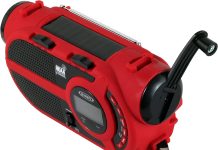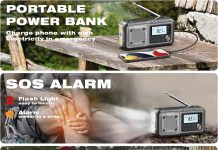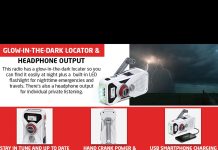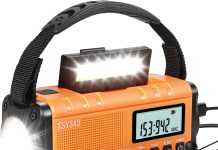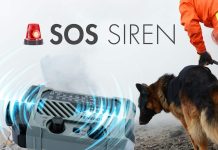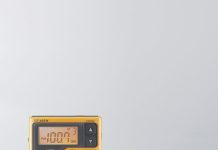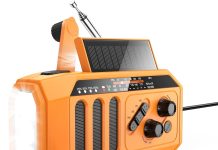In this article, we will explore the exciting world of hurricane tracking and the technology that makes it possible. From satellites to radar systems, there are four main types of technology that play a crucial role in monitoring and predicting the path of these powerful storms. With the ability to save lives and protect communities, understanding how these technologies work is key to safeguarding against the devastating impacts of hurricanes. So, buckle up and get ready to dive into the fascinating realm of hurricane tracking technology!
Review contents
Radar
Radar technology plays a vital role in tracking hurricanes and providing crucial information about their location, intensity, and movement. It operates based on the principle of emitting radio waves and detecting their reflections. This technology became essential in hurricane tracking during World War II when it was initially developed for military purposes. Since then, radar systems have significantly evolved and have become an integral tool used by meteorologists around the world.
Radio Waves
Radio waves are a form of electromagnetic radiation used in radar systems to detect and track hurricanes. These waves are emitted by a radar transmitter and travel through the atmosphere until they encounter an object, such as raindrops or debris within a hurricane. When the radio waves strike these objects, they reflect back towards the radar receiver, providing valuable information about the storm’s structure and intensity.
Doppler Radar
Doppler radar is an advanced technology that not only detects the presence of objects but also measures their velocity. By utilizing the Doppler effect, which measures changes in frequency caused by the motion of objects, meteorologists can assess the speed and direction of rain or wind within a hurricane. This allows for a more accurate estimation of the storm’s intensity and potential for severe weather conditions.
Pulse-Doppler Radar
Pulse-Doppler radar combines the capabilities of traditional radar and Doppler radar. It uses pulses of radio waves to detect and measure the velocity of objects within a hurricane. This technology is particularly useful in tracking hurricanes as it provides detailed information about the storm’s internal motion, including the rotation of individual storm cells and the presence of tornadoes.
Satellites
Satellite technology has revolutionized hurricane tracking by providing a comprehensive view of these massive storms from above. Satellites orbiting the Earth capture images and data that help meteorologists monitor and analyze hurricanes in real-time.
Geostationary Satellites
Geostationary satellites are positioned at a fixed point above the Earth’s equator, allowing them to continuously monitor a specific region. These satellites provide constant and high-resolution images of hurricanes, enabling meteorologists to track their movement, observe changes in cloud patterns, and accurately predict their path and intensity. Geostationary satellites are also equipped with infrared sensors that can measure the surface temperature of the oceans, aiding in the identification of potential hurricane development areas.
Polar-orbiting Satellites
Polar-orbiting satellites orbit the Earth from pole to pole and capture images and data at various angles. These satellites provide a global perspective on hurricanes and collect essential information about atmospheric conditions, moisture levels, and temperature gradients. By combining data from multiple polar-orbiting satellites, meteorologists can create a three-dimensional picture of a hurricane, enhancing their ability to forecast its behavior and potential impact on coastal areas.
Aircraft Reconnaissance
Aircraft reconnaissance plays a crucial role in tracking hurricanes by collecting valuable data from within the storm itself. These specially equipped aircraft can fly directly into hurricanes, allowing scientists to gather real-time measurements and monitor changes in the storm’s structure.
Hurricane Hunter Planes
Hurricane hunter planes, operated by organizations such as the National Oceanic and Atmospheric Administration (NOAA) and the United States Air Force, are specifically designed to withstand the extreme conditions within a hurricane. These aircraft are equipped with state-of-the-art meteorological instruments, including radar, dropsondes, and weather radars, which collect data on wind speed, temperature, humidity, pressure, and other atmospheric variables. The information gathered by hurricane hunter planes greatly improves hurricane track forecasts and provides critical data for weather models.
Dropsondes
Dropsondes are small, parachute-borne devices that are released from hurricane hunter planes into the storm’s core. As they descend, dropsondes collect data on temperature, humidity, wind speed, and wind direction, providing a vertical profile of the hurricane’s atmosphere. This data helps meteorologists understand the structure and intensity of the storm, contributing to more accurate forecasts.
Weather Balloons
Weather balloons are another important tool used in hurricane tracking. These large helium-filled balloons carry instruments, known as radiosondes, into the atmosphere to collect data on temperature, humidity, pressure, and wind speed at various altitudes. The information obtained from weather balloons aids in understanding the atmospheric conditions surrounding a hurricane and assists in determining its potential intensity and movement.
Buoy Networks
Buoy networks consist of strategically placed floating devices that gather data on ocean conditions. This information is crucial for tracking hurricanes, as the warm ocean waters provide the primary source of energy for these destructive storms.
Ocean Buoys
Ocean buoys are specialized devices equipped with sensors that measure various parameters, including water temperature, wave height, current speed, and wind direction. By deploying buoys at strategic locations, meteorologists gain valuable insights into the conditions that contribute to hurricane formation and strengthening. Ocean buoys also play a vital role in monitoring changes in sea surface temperature, which can indicate the presence of ocean currents or the potential for rapid intensification of tropical systems.
Weather Buoys
Weather buoys serve a similar purpose to ocean buoys but focus on collecting data related to atmospheric conditions. These buoys are equipped with sensors that measure air temperature, humidity, barometric pressure, and wind speed. The collected data provides meteorologists with critical information about the surrounding environment, aiding in the prediction and tracking of hurricanes.
Weather Models
Weather models are computer-generated simulations that utilize complex equations and algorithms to forecast the behavior of the atmosphere. These models play a vital role in hurricane tracking by processing vast amounts of data and generating predictions about the storm’s path, intensity, and potential impacts.
Numerical Weather Prediction Models
Numerical weather prediction models are the foundation of modern hurricane tracking and forecasting. These models divide the Earth’s atmosphere into a three-dimensional grid and use mathematical equations to simulate the behavior of various meteorological processes. By inputting real-time data collected from satellites, radars, and other sources, these models can simulate the evolution of a hurricane, aiding in track predictions and intensity forecasts.
Ensemble Forecast Models
Ensemble forecast models are a variation of numerical weather prediction models that generate multiple forecasts instead of a single prediction. By running the model multiple times with slight variations in initial conditions, ensemble forecasts provide a range of possible outcomes, indicating the level of uncertainty in predicting a hurricane’s track and intensity. This information is valuable for decision-makers and allows for a more probabilistic approach to planning and preparing for potential hurricane impacts.
Artificial Intelligence
Artificial intelligence (AI) is an emerging technology that has the potential to revolutionize hurricane tracking and forecasting. By leveraging machine learning and deep learning algorithms, AI systems can analyze vast amounts of data and identify patterns in hurricane behavior, leading to more accurate predictions.
Machine Learning
Machine learning algorithms can be trained to recognize patterns and relationships within historical hurricane data. By analyzing previous storm tracks, weather conditions, and other relevant factors, machine learning models can learn to predict the future behavior of hurricanes. This technology has the potential to improve hurricane track forecasts and provide more accurate predictions of potential landfall locations.
Deep Learning
Deep learning, a subset of machine learning, involves training neural networks to learn and make predictions based on large datasets. In the context of hurricane tracking, deep learning algorithms can analyze satellite images, radar data, and other atmospheric measurements to identify the specific features and patterns associated with different stages of a hurricane’s development. This can aid meteorologists in identifying the early signs of intensification or the potential for rapid changes in a storm’s structure.
Internet of Things (IoT)
The Internet of Things (IoT) has opened up new possibilities for collecting and sharing real-time weather data. By connecting various devices and sensors, the IoT enables the continuous monitoring of meteorological conditions, which is crucial for tracking hurricanes.
Weather Sensors
Weather sensors have become an integral part of the IoT infrastructure for hurricane tracking. These sensors can measure a range of meteorological variables, including temperature, humidity, air pressure, wind speed, and rainfall. By deploying a network of weather sensors in hurricane-prone areas, real-time data can be collected, providing essential information to meteorologists and improving the accuracy of hurricane forecasts.
Smart Grid Technologies
Smart grid technologies, which incorporate IoT capabilities into power distribution systems, also play a role in hurricane tracking. By monitoring energy consumption patterns, power outages, and other related data, smart grid technologies can provide valuable insights into the impact of hurricanes on the electrical infrastructure. This information can aid in predicting the extent and duration of power outages, enabling authorities to better prepare and respond to a storm’s aftermath.
Mobile Applications
Mobile applications have transformed the way people access and interact with weather information. In the context of hurricane tracking, these applications provide users with real-time updates, forecasts, and emergency preparedness guidance, empowering individuals to make informed decisions and stay safe during severe weather events.
Hurricane Tracking Apps
Hurricane tracking apps have become popular tools for staying informed about the latest developments in a storm’s path. These apps provide real-time updates, satellite imagery, radar data, and official forecasts from meteorological agencies. Users can track hurricanes, receive alerts, and access evacuation routes and emergency contact information, enhancing their ability to stay safe during a hurricane.
Emergency Preparedness Apps
Emergency preparedness apps offer a wide range of features to help individuals and communities be prepared for hurricanes and other natural disasters. These apps provide information on creating emergency supply kits, developing evacuation plans, and locating nearby shelters or medical facilities. They also offer real-time weather updates, disaster response guidelines, and contact information for emergency services, enabling users to take proactive measures and minimize the impact of a hurricane.
Social Media
Social media platforms have become powerful tools for disseminating information during hurricane events. They allow for real-time updates, the sharing of user-generated content, and the mobilization of resources and assistance in affected areas.
Crowdsourcing
Crowdsourcing refers to the practice of gathering information, opinions, or resources from a large online community. During hurricanes, social media platforms become hubs for crowdsourcing information, as users share photos, videos, and eyewitness accounts of storm conditions. This user-generated content can provide valuable insights into a hurricane’s impact, helping meteorologists and emergency responders make informed decisions and assess the situation on the ground.
Real-time Updates
Social media platforms are also instrumental in providing real-time updates during hurricanes. Many meteorological agencies and emergency management organizations have official social media accounts dedicated to sharing the latest forecasts, evacuation orders, and safety information. Users can follow these accounts for immediate updates, enabling them to stay informed and take appropriate actions as a storm unfolds.
GIS Mapping
Geographic Information Systems (GIS) mapping technology is widely used in hurricane tracking to visually analyze and present complex data related to the storm’s position, intensity, and potential impact on specific areas.
Geographic Information Systems
Geographic Information Systems (GIS) are computer-based tools for capturing, managing, analyzing, and presenting geographic data. In the context of hurricane tracking, GIS technology allows meteorologists to overlay and analyze various datasets, such as satellite imagery, radar data, and topographic information. This combination of data provides a comprehensive understanding of a hurricane’s characteristics and facilitates the creation of accurate track forecasts and impact assessments.
Mapping and Visualization Tools
Mapping and visualization tools powered by GIS technology are invaluable for communicating the potential impact of hurricanes to the public and decision-makers. These tools can create interactive maps that display forecasted storm tracks, storm surge zones, and evacuation routes. By visualizing this information, individuals and authorities can better understand the risks associated with a hurricane and make informed decisions in preparation for its arrival.
In conclusion, tracking hurricanes requires a combination of advanced technologies and tools. Radar systems, including Doppler and Pulse-Doppler radar, provide crucial information about a storm’s location and intensity. Satellites, such as geostationary and polar-orbiting satellites, offer a comprehensive view of hurricanes from above. Aircraft reconnaissance, through hurricane hunter planes, dropsondes, and weather balloons, collect real-time data within the storm’s core. Buoy networks, including ocean and weather buoys, measure ocean and atmospheric conditions. Weather models, including numerical weather prediction models and ensemble forecast models, process vast amounts of data to generate predictions. Artificial intelligence, with machine learning and deep learning algorithms, aids in pattern recognition and accurate forecasting. The Internet of Things enables the continuous monitoring of weather conditions through weather sensors and smart grid technologies. Mobile applications provide real-time updates and emergency preparedness guidance. Social media platforms allow for crowdsourcing and real-time updates from users. GIS mapping technology enables the visualization and analysis of complex hurricane data. By utilizing these technologies in conjunction, meteorologists can improve hurricane tracking and provide timely warnings to communities at risk.




